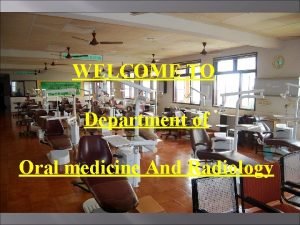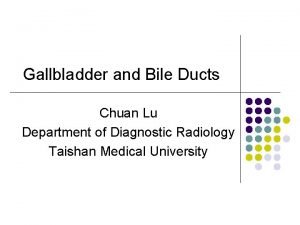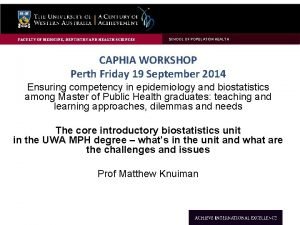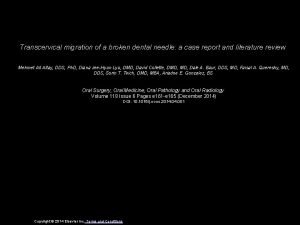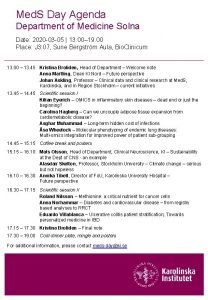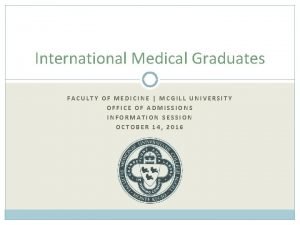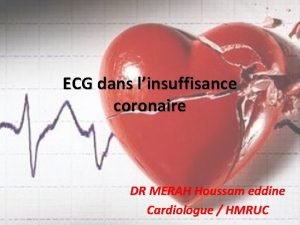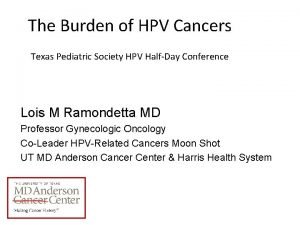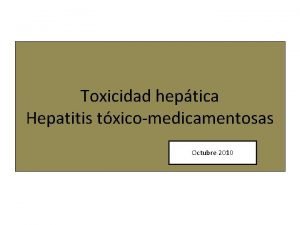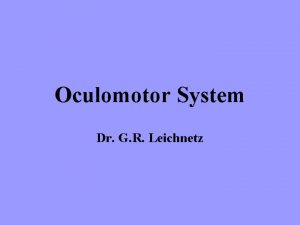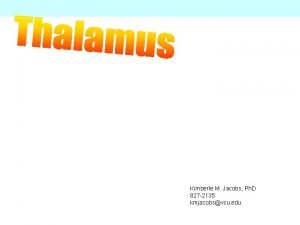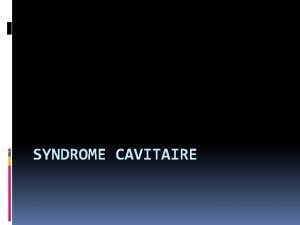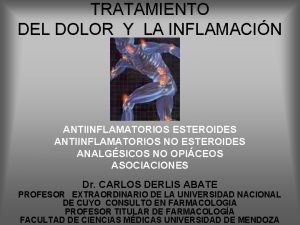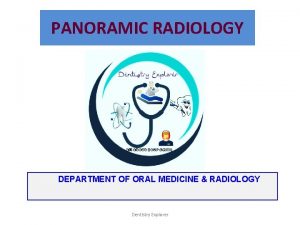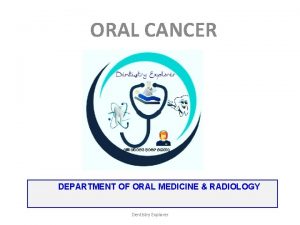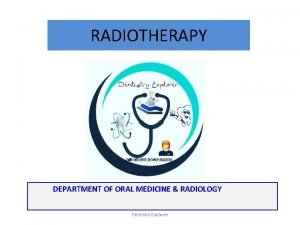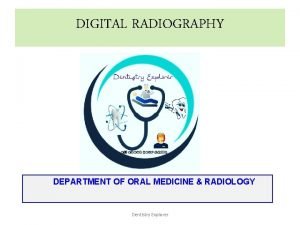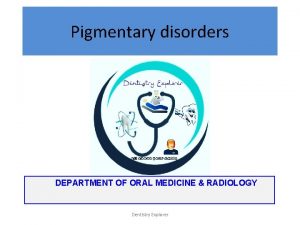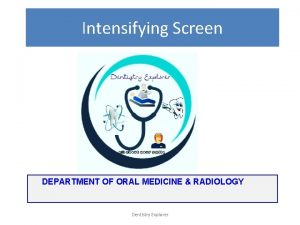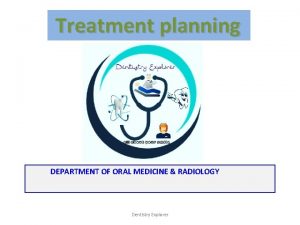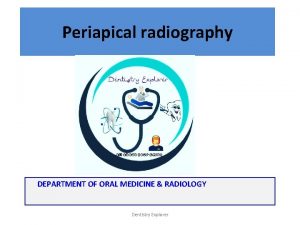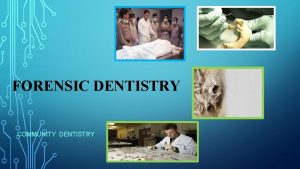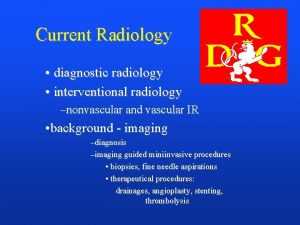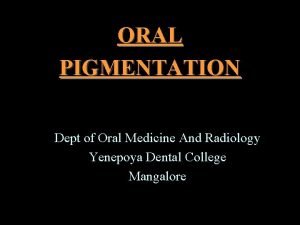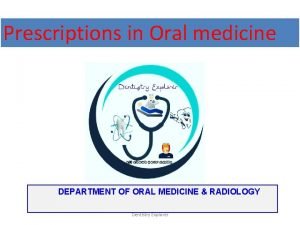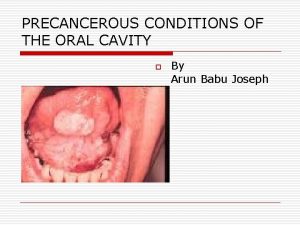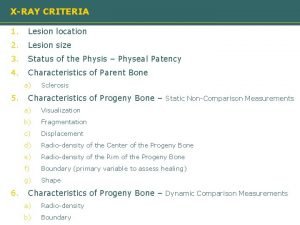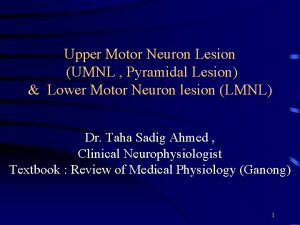Precancerous lesion DEPARTMENT OF ORAL MEDICINE RADIOLOGY Dentistry





















- Slides: 21

Precancerous lesion DEPARTMENT OF ORAL MEDICINE & RADIOLOGY Dentistry Explorer

LEUKOPLAKIA Predominantly white lesion of oral mucosa that cannot be characterized as any other definable white lesions. • Classification: A)Homogenous(uniformly white) B)Non-homogenous(mixed white and red) • Etiopathogenesis: Smoking and chewing tobacco, candidal infectons, dietary deficiency of vit. A and B complex, viral infections(HSV, HPV 16&18), alcoholism(synergistic) • Hyperkeratosis(reversible if causes are removed) At certain stage mutation leads to unrestrained proliferation and cell division Dentistry Explorer Dysplastic features

Clinical features: • >50 yrs, infrequent below 30 yrs, M >F • Frequently in buccal mucosa in commissural areas • homogenous-white well demarcated plaque with identical reaction pattern throughout the lesion, smooth or fissured(cracked mud) • non-homogenous-white patches+red tissue elements (erythroleukoplakia), may be speckled, nodular or verrucous Histopathological features: hallmark-epithelial hyperplasia and surface hyperkeratosis Epithelial dysplasia if present may vary from mild to severe Malignant transformation rate-1 -20% over 1 -30 yrs risk: Homogenous<non-homogenous Ø Prognosis-relatively poor for OSCC Ø d/d-oral candidiasis -oral lichen planus -white sponge nevus, leukoedema -chronic cheek biting -syphilitic mucous patches Dentistry Explorer

Erythroplakia • • Erythroplakia is the clinical diagnostic term for a chronic red mucosal macule which cannot be given another specific diagnostic name and cannot be attributed to traumatic, vascular or inflammatory causes, therefore its diagnosis is based on exclusion. Any lesion of oral mucosa that present as bright red velvety plaque which cannot be characterised clinically or pathologically as any other recognizable condition Etiology –unknown , tobacco n alcohol c/f-middle or old age, Site-floor of mouth , tongue , soft palate Oral mucosa appear well demarcated erythematous macule or plaque with soft velvety texture Histological feature-lack of keratin production , atrophic or hyperplastic epithelium • Once a biopsy is performed the term should be further specified regarding the presence or absence of atypical or dysplastic epithelial cells. • The lesion is considered precarcinogenic, meaning it carries a higher than normal risk of malignant transformation. • An asymptomatic red macule or patch on a mucosal surface. The reason for the red color attributed to a combination of dilation and engorgement of the subepithelial Dentistry microvascular system and a thinning of Explorer the keratin layer or of the entire epithelium.

• Erythroplakia should always be removed, either as an excisional biopsy or after an incisional biopsy has verified dysplastic cells. • The key to treatment of erythroplakia is long term clinical follow-up and examination of patients a couple of times a year for a good number of years. This is due to the fact that many follow-up investigations of hundreds of lesions have demonstrated significant rates of malignant transformation. DD non specific mucositis Candidiasis Psroriasis Vascular lesion Malignant transformation-18 -47% Dentistry Explorer

BOWEN’S DISEASE Definition: Localised intra epidermal squamous cell carcinoma may progress to invasive carcinoma over many years which is characterised by progressive scaly or crusted plaque like lesion. Etiology: sun-exposure, Arsenic ingestion Clinical Features: m>f, older age-common, site-genital and oral mucosa Appearance- slowly enlarging erythematous patch with little tendency to malignant transfer(2%) On skin-Red and scaly areas, enlarges and turns into white or yellowish lesion. Sign: When scales removed, produces granular surface without bleeding Dentistry Explorer

Histopathology: Epithelial cells lies in complete disarray pattern with atypical , hyperchromatic nuclei and multiple nuclear form. Ø Individual cell keratinization. A nodular, benign, virus-associated epithelial dysplasia with a histologic picture resembling carcinoma in situ is BOWENOID PAPULOSIS q Treatment: surgical excision and irradiaton q Prognosis: Excellent q D/D: Actinic keratosis, squamous cell carcinoma, epidermoid carcinoma. Dentistry Explorer

Palatal changes in reverse smoking • Reverse chutta-a crude form of cigar smoking practiced in some part of india • Age group-55 -64 year, more common in female • Clinical aspects : Keratosis-diffuse whitening of the entire palatal mucosa Excresscences- 1 -3 mm elevated nodules often with central red spots Patches-well defined elevated white plaques Red areas well defined reddening of the palatal mucosa Ulcerated areas crater like areas covered by fibrin Non pigmented areas of palatal mucosa that are devoid of pigmentation • Histology hyperkeratosis , epithelial dysplasia , inflammatory infiltrate in the connective tissue, melanin deposits in lamina propria Dentistry Explorer

Prognosis: regression upon discontinuation of habit Malignant transformation in about 0. 3% of palatal lesions Red areas and patches exhibit high potential for malignant transformation Dentistry Explorer

Actinic keratosis • Aka Solar keratosis • Common cutaneous premalignant lesion caused by cumulative UV radiation to sun-exposed skin • p 53 tumor suppressor gene, telomerase gene mutation • Immunosuppression, arsenic exposure • Genetic abnormalities such as Albinism, Rothmund-Thompson syndrome, Cockayne syndrome, Bloom syndrome, Xeroderma Pigmentosum • Clinical features: – age: <40 years – Site: face and neck region, dorsum of the hand, forearm and scalp – Lesion: irregular scaly plaque, normal to white, gray or brown – size: <7 mm to 2 cm Dentistry Explorer

• ‘Sandpaper’ rough texture • Occasionally, keratin horn (D/D: verruca vulgaris, seborrheic keratosis) arising from the centre of the lesion • Histopathological feature: • • • Hyperparakeratosis and suprabasilar acantholysis Tear drop shaped rete ridges Bowenoid actinic keratosis- full thickness dysplasia Melanosis and lichenoid inflammatory infiltrate Solar elastosis-band of pale basophilic band due tosun damaged collagen n elastic fibres • Malignant transformation rate: approximately 10% over two years • Prognosis: good Dentistry Explorer

Actinic cheilosis • Sun damage to the lower lip vermilion • Result of excessive exposture to the ultraviolet component of sunlight • Age group more than 45 year m; f=10; 1 • c/f—earliest c/f is atrophy of lower lip area vermilion, smooth surface n blotchy pale area. Blurring of margin between vermilion n cutaneous portion of skin • Later rough scaly on drier portion of vermilion. Chronic focal ulceration develop • Histopathological-atropic stratified squamous epithelium with varying degree of keratin production with chronic inflammatory cells in conective tissuen band of amorphous , acellular, basophilic changes known as actinic elastosis • Malignant transformation-6 -10% occur afterof 60 year age Dentistry Explorer

CARCINOMA IN SITU • Also known as intraepithelial carcinoma ü Frequent on skin but occurs on mucus membrane including oral cavity ü most severe form of epithelial dysplasia ü characterised by full thickness cytological and architectural changes ü top to bottom change ü malignant change but without invasion ü Malignant transformation-16 -47% Dentistry Explorer

Dentistry Explorer

• Smoker’s palate (stomatitis nicotina) • It is a white leathered lesions of the palate. • Etiopathogenesis : most often related to high temperature rather than chemical component of smoke although synergistic effect of two. - erythematous irritation initially. - followed by whitish palatal mucosa reflecting hyperkeratosis C/f: - M > F , common in high consumers of pipe tobacco &cigarettes and reverse smokers. Found in middle aged to elderly men. Posterior to palatal rugae , soft palate and sometimes extending to buccal mucosa , rarely dorsum of tongue. Palatal mucosa becomes diffusely gray or white with slightly elevated papules With punctate red centres representing Inflamed minor salivary gland Dentistry Explorer

• Histology : characterized by hyperkeratosis , acanthosis , and a mild subepithelial inflammation. • Malignant transformation rate : not much increased risk of transforming into cancer. • Prognosis : very good prognosis as the lesion resolves completely after cessation of the habit. • Differential diagnosis : reverse smoking palatal change papillary hyperplasia of palate Dentistry Explorer

Snuff dipper lesion (Ackerman’s tumor) • Definition : It is a predominantly exophytic overgrowth of well differentiated keratinising epithelium having minimal atypia and with locally destructive pushing margins at its interface with underlying connective tissue. Dentistry Explorer

Etiopathogenesis : mostly seen in those who chew tobacco or use snuff tobacco. Due to chronic irritation at the site surface corrugates leading to white lesion. C / f : Mostly male teenagers Hard palate , FOM , and ventral tongue. early lesions are pale pink, with corrugated and wrinkled surfaces. color may progress to white , yellow white and yellow brown Histologic features : Increased epithelial thickness No epithelial dysplasia Acantholysis Slight inflammatory reaction Malignant transformation rate : has chance of transforming into verrucous carcinoma. Malignant transformation not common but do occur. Prognosis : good to poor Differential diagnosis : Keratoacanthoma Nicotine stomatiti Oral frictional hyperkeratosis Oral lichen planus Dentistry Explorer

• Tobacco pouch keratosis It is the term for white plaques that form on the oral mucosa , usually in the areas where it is placed. • Etiopathogenesis : Etiologic agents are tobacco and snuff. At the site of placement , chronic localised irritation leading to toughening and whitening of skin , due to defense mechanism causing keratosis. • C/f: M>F - patient usually presents with ill defined area of white and wrinkled thickening most commonly on mandibular labial and buccal mucosal fold. -early presentation : less prominent, pinkish, corrugated & rough in palpation. -advanced stage : red patches, Dentistry edematous and wrinkled Explorer

• Histology : The histology ranges from benign to low grade dysplasia. High grade epithelial dysplasias and squamous cell carcinoma are rare • Malignant transformation rate : has increased risk for transforming into oral cancers. • Prognosis : the prognosis depends on the histology and ranges from good to poor. Lesion regresses with discontinuation of tobacco use. • Differential diagnosis : Smokeless tobacco keratosis White songe nevus Linea alba Dentistry Explorer

Dentistry Explorer
 Oral disease
Oral disease American academy of oral and maxillofacial radiology
American academy of oral and maxillofacial radiology Slouged
Slouged Faculty of medicine dentistry and health sciences
Faculty of medicine dentistry and health sciences Dentistry & oral sciences source
Dentistry & oral sciences source Oral medicine
Oral medicine Department of medicine solna
Department of medicine solna Mcgill medicine supporting documents
Mcgill medicine supporting documents From jane mnemonic endocarditis
From jane mnemonic endocarditis Heterogeneous hypoechoic lesion in liver
Heterogeneous hypoechoic lesion in liver Menisco
Menisco Lésion
Lésion Isquemia lesion y necrosis
Isquemia lesion y necrosis Image en miroir ecg définition
Image en miroir ecg définition Low grade squamous intraepithelial lesion
Low grade squamous intraepithelial lesion Citolítico
Citolítico Right mlf lesion
Right mlf lesion Mamillothalamic tract
Mamillothalamic tract Hyperorthokeratosis vs hyperparakeratosis
Hyperorthokeratosis vs hyperparakeratosis Lésion en verre dépoli
Lésion en verre dépoli Sugralfate
Sugralfate Papilar lesion
Papilar lesion
